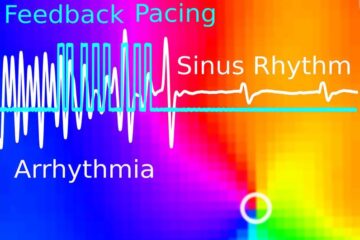Hackers beware! New technique uses photons, physics to foil codebreakers

Quantum cryptography allows transmission of data through fibre optic cable´s
For governments and corporations in the business of transmitting sensitive data such as banking records or personal information over fibre optic cables, a new system demonstrated by University of Toronto researchers offers the protective equivalent of a fire-breathing dragon.
“Quantum cryptography is trying to make all transmissions secure, so this could be very useful for online banking, for example,” says Professor Hoi-Kwong Lo, an expert in physics and electrical and computer engineering at U of T’s Centre for Quantum Information and Quantum Control and the senior author of a new study about the technique. “The idea can be implemented now, because we actually did the experiment with a commercial device.”
The study describes the first experimental proof of a quantum decoy technique to encrypt data over fibre optic cable. In quantum cryptography, laser light particles (photons) carry complex encryption keys through fibre optic cables, dramatically increasing the security of transmitted data. Conventional encryption is based on the assumed complexity of mathematical problems that traditional computers can solve. But quantum cryptography is based on fundamental laws of physics — specifically, Heisenberg’s Uncertainty Principle, which tells us that merely observing a quantum object alters it.
The technique varies the intensity of photons and introduces photonic “decoys,” which were transmitted over a 15-kilometre telecommunication fibre. After the signals are sent, a second broadcast tells the receiving computer which photons carried the signal and which were decoys. If a hacker tries to “eavesdrop” on the data stream to figure out the encryption key, the mere act of eavesdropping changes the decoys — a clear sign to the receiving computer that the data has been tampered with.
The study appears in the Feb. 24 issue of Physical Review Letters and was funded by Connaught, the Natural Sciences and Engineering Research Council of Canada, the Canada Research Chairs program, the Canada Foundation for Innovation, id Quantique, the Ontario Innovation Trust, a Premier’s Research Excellence Award, the Canadian Institute for Photonics Innovations, the Canadian Institute for Advanced Research and the University of Toronto.
Contact:
Hoi-Kwong Lo, Centre for Quantum Information and Quantum Control, University of Toronto; e-mail: hklo@comm.utoronto.ca, 416-946-5525
Media Contact
More Information:
http://www.utoronto.caAll latest news from the category: Physics and Astronomy
This area deals with the fundamental laws and building blocks of nature and how they interact, the properties and the behavior of matter, and research into space and time and their structures.
innovations-report provides in-depth reports and articles on subjects such as astrophysics, laser technologies, nuclear, quantum, particle and solid-state physics, nanotechnologies, planetary research and findings (Mars, Venus) and developments related to the Hubble Telescope.
Newest articles

Wildfire danger to increase due to climate change
WSL Institute for Snow and Avalanche Research (SLF) researchers expect an elevated wildfire danger in the Alpine Foreland from 2040 onwards due to changing meteorological conditions. The danger currently remains…

Advanced Brain Science Without Coding Expertise
Researchers at Helmholtz Munich and the LMU University Hospital Munich introduce DELiVR, offering a new AI-based approach to the complex task of brain cell mapping. The deep learning tool democratizes…

Gentle defibrillation for the heart
Using light pulses as a model for electrical defibrillation, Göttingen scientists developed a method to assess and modulate the heart function. The research team from the Max Planck Institute for…





















